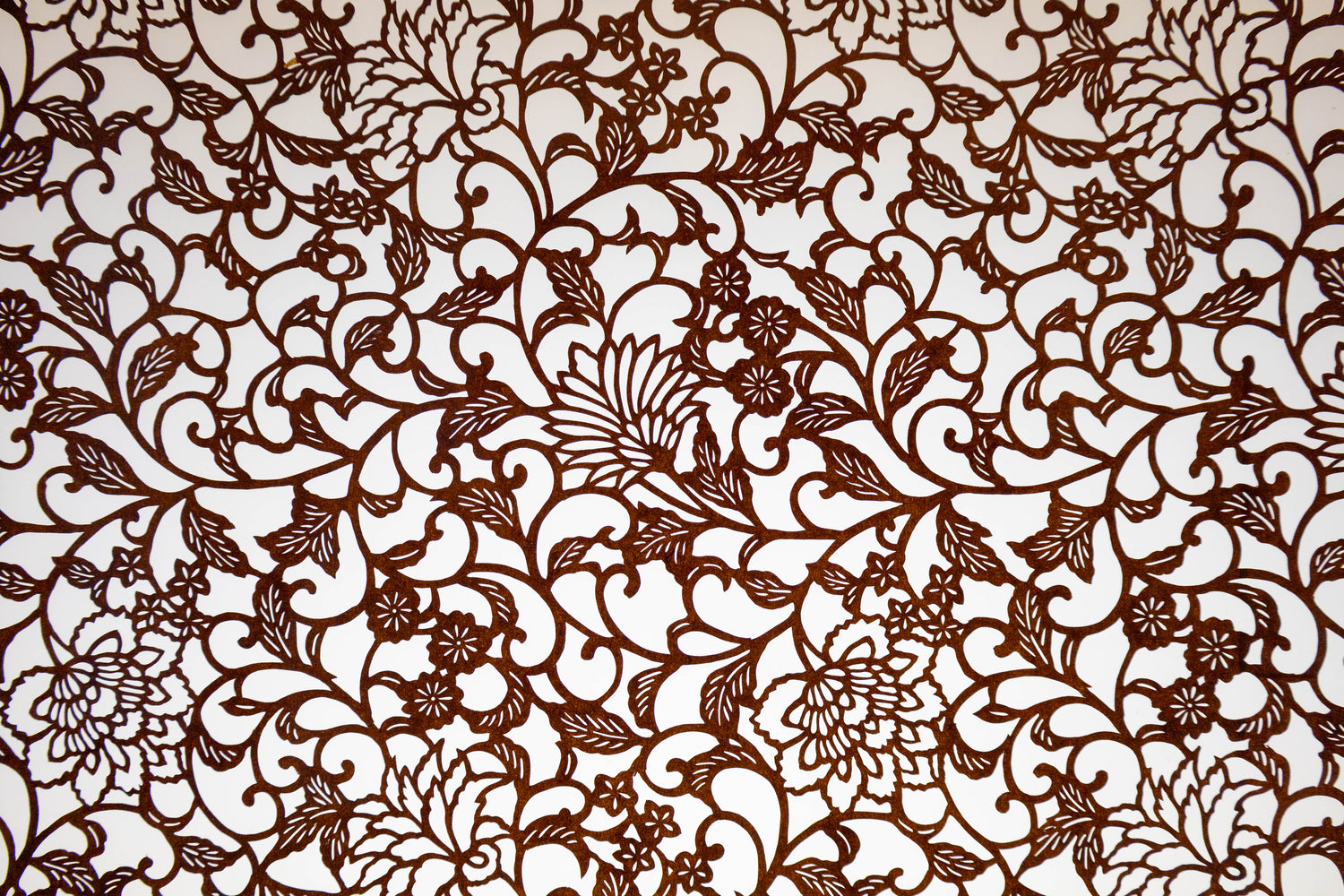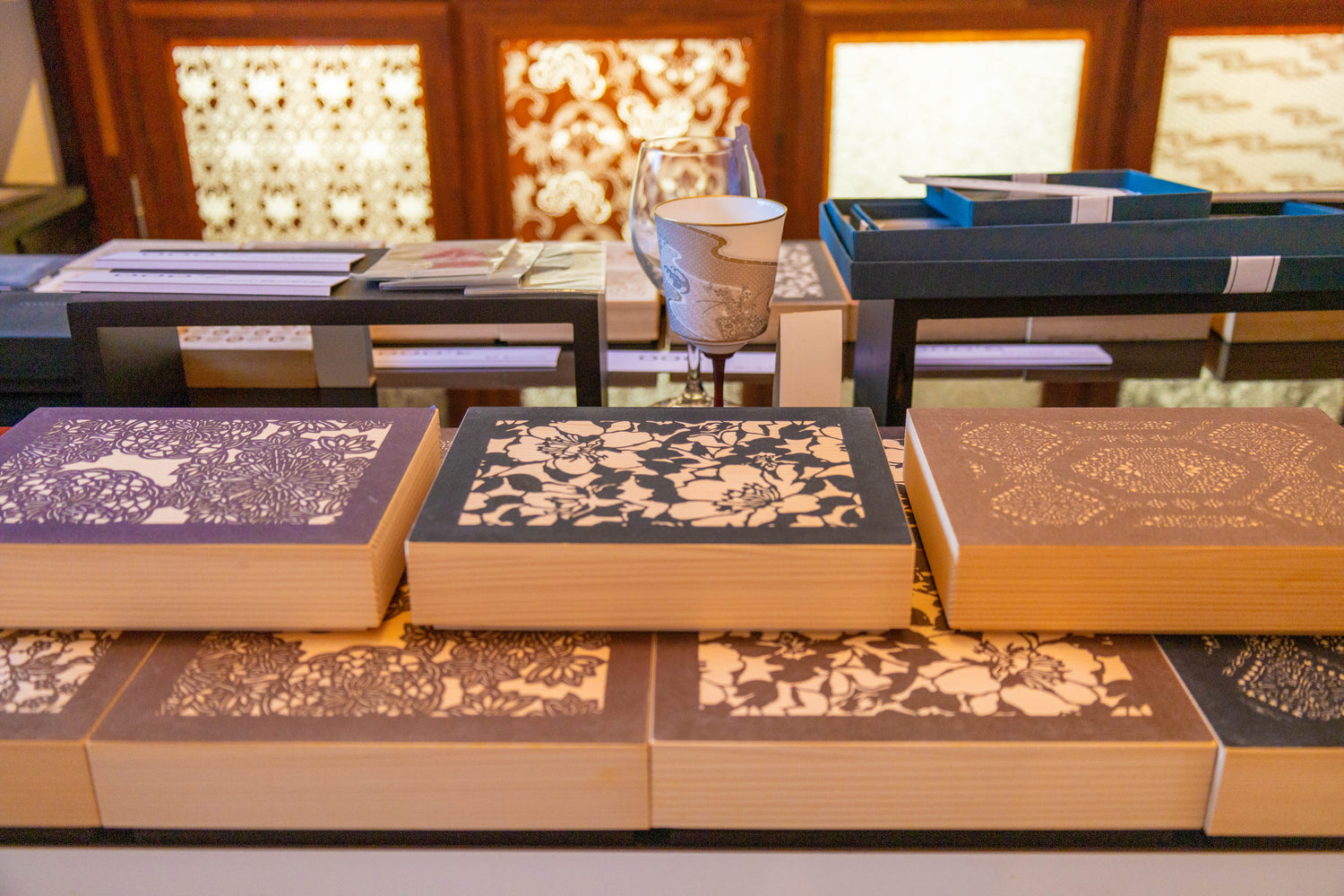株式会社オコシ型紙商店
Ise Katagami Library Box [Peony] Light Ink
Ise Katagami Library Box [Peony] Light Ink
Supplementary product information
Supplementary product information
Production area: Mie Prefecture
Dimensions:
・(Width) 145mm
・(Depth) 195mm
・(Height) 43mm
Materials:
Main body: Fir wood
Inner lining: Suede fabric
<Precautions for use>
・Natural wood is used. Fir wood is a soft material, so it is prone to scratches and dents, and as natural wood, it will change color over time.
・The photos shown may appear different from the actual colors depending on your screen.
・Accessories shown in the example photos (accessories, watches, postcards, pens, etc.) are not included.
Couldn't load pickup availability
This document box features a lid-type design. It can also be stylishly displayed on walls like a fabric panel.
【Peony】
The magnificent peony, king of all flowers, symbolizes "happiness," "wealth," and "nobility." Additionally, the character "tan" in peony refers to the elixir of immortality, giving it meanings of eternal youth and longevity. The peony arabesque pattern, which combines peonies with scrolling vines, has been cherished since the Muromachi period. This design of flowers connected by vines expresses the beauty of strong bonds between people and the sanctity of connection.
【Fir】
As an evergreen tree also used for Christmas trees, the fir maintains its green color throughout winter and is considered a symbol of "vitality." It is also said that the essential oil components of fir have deodorizing properties.
![Ise Katagami Library Box [Peony] Light Ink](http://rashiku.store/cdn/shop/files/bunkobako_botan_usuzumi_1.jpg?v=1689655311&width=1445)
![Ise Katagami Library Box [Peony] Light Ink](http://rashiku.store/cdn/shop/files/bunkobako_botan_usuzumi_2.jpg?v=1689655310&width=1445)
![Ise Katagami Library Box [Peony] Light Ink](http://rashiku.store/cdn/shop/files/bunkobako_botan_usuzumi_3.jpg?v=1689655310&width=1445)
![Ise Katagami Library Box [Peony] Light Ink](http://rashiku.store/cdn/shop/files/bunkobako_botan_usuzumi_4.jpg?v=1689655311&width=1445)
![Ise Katagami Library Box [Peony] Light Ink](http://rashiku.store/cdn/shop/files/bunkobako_1_4ac823bf-14d0-4e9b-8422-de12b70fbf9c.jpg?v=1689655310&width=1445)
![Ise Katagami Library Box [Peony] Light Ink](http://rashiku.store/cdn/shop/files/bunkobako_2_dbbd57f8-487d-40cc-90d1-97edb71254c4.jpg?v=1689655311&width=1445)
![Ise Katagami Library Box [Peony] Light Ink](http://rashiku.store/cdn/shop/files/bunkobako_3_3848704b-b6d4-44e7-a7ad-1b7953dc60b1.jpg?v=1689655310&width=1445)

The History of Ise Katagami
While there are various theories about the origins of Ise katagami, it is said that during the Edo period, kata-dyeing was used for samurai kamishimo garments, and as komon patterns became increasingly intricate, stencil paper techniques developed. Under the protection of the Kishu domain, stencil dealers organized merchant guilds and traveled throughout the country to sell their products, which led to the nationwide spread of Ise katagami.

Ise Katagami Techniques and Production Process
Traditional carving techniques include four types: kiri-bori (awl carving), tsuki-bori (thrust carving), hiki-bori (pull carving), and dougu-bori (tool carving). Typically, each craftsman specializes in their respective technique and carries out carving activities as a specialist.
The production process involves creating preliminary sketches of the design, carving the small master pattern, transferring the small master pattern, and then proceeding to carve the transferred motifs.

Examples of Ise Katagami usage
Ise-katagami originally refers to stencil paper with patterns carved out for the purpose of dyeing designs on kimono. Its artistic design and aesthetic appeal have captivated audiences overseas and have been widely incorporated into fashion, interior design, and various other products and projects.
Ise Katagami
Ise Katagami is produced in the Shiroko, Teraie, and Ejima districts of Suzuka City, Mie Prefecture.
Ise Katagami is created by applying persimmon tannin to Mino washi (Japanese paper), layering the sheets alternately in vertical and horizontal directions to increase strength, and applying persimmon tannin again to create the base paper. Using carving knives, kimono patterns and designs are then hand-carved into this base paper to create the stencils.







